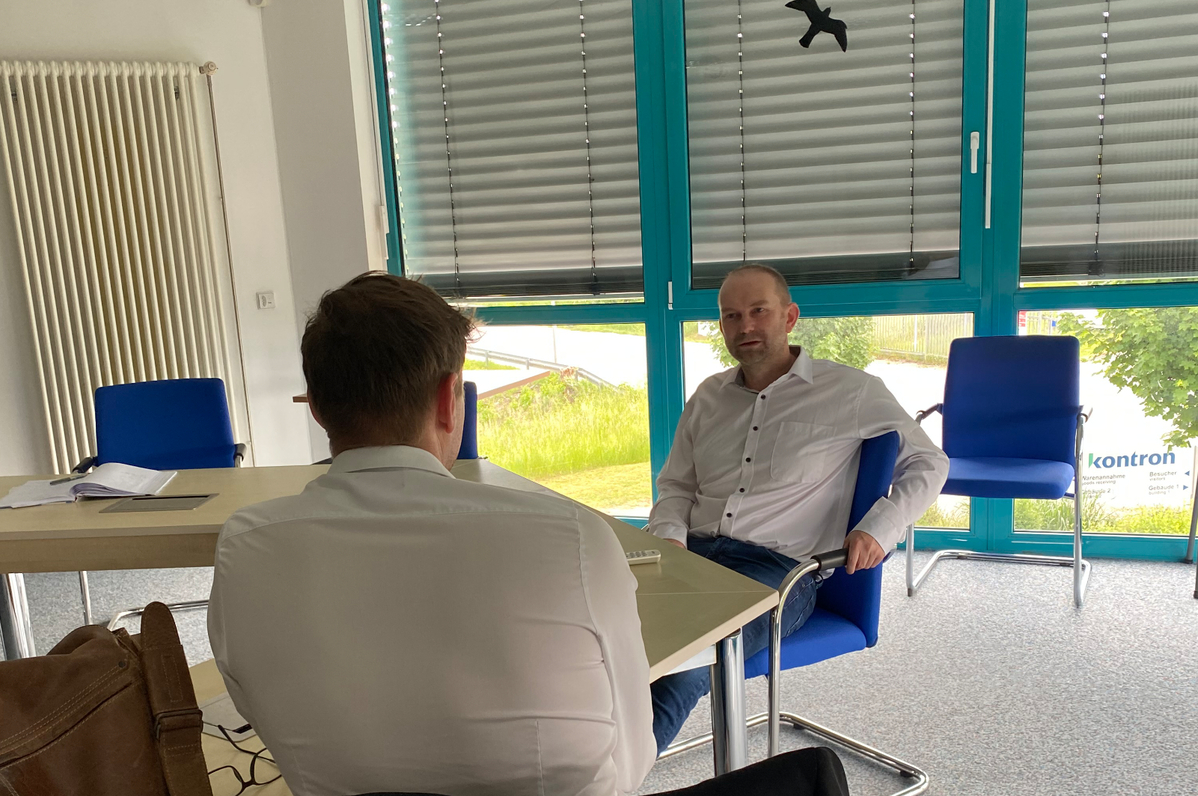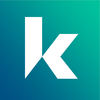Peter Müller is Vice President Product Line Modules at Kontron. He explains the company's new strategy and assesses the opportunities it presents. In doing so, he does not leave out current topics and challenges - and gives an outlook on the group's next activities.
The interview was conducted by Tobias Schlichtmeier from Weka Verlag and we would like to take this opportunity to thank the publisher for allowing us to publish the interview here.
Mr Müller, last year Kontron adapted its brand identity, aiming to be perceived as an expert for IoT applications. What does that mean for the company's strategy?
Peter Müller: Put simply, from now on we are focusing the expertise of the entire Kontron Group on the IoT market. On the other hand, we are completely dispensing with the IT and SAP services area and have sold the division. For this reason, we were able to generate a high cash flow and use the money to strengthen IoT business areas, for example 5G or artificial intelligence (AI). We also rely on mergers and acquisitions (M&A) to build up new technology competencies. We are also expanding our CPU-based hardware business into connectivity and AI and focusing on high-margin segments in industrial, medical, transportation and aerospace.
What consequences does this have for the embedded computer module business?
Little, as we are simply following the Kontron strategy. We want to continue to offer our customers our extensive portfolio of computer modules and processors and generate added value, on the one hand in terms of time to market and on the other hand in terms of integration options. Especially for the 5G area, we are enabling increased connectivity on the modules; for example, we are preparing frameworks for this. On the subject of AI, we are increasingly integrating AI chips from Hailo into our products.
The second major topic in the area of computer modules is a stronger focus on deep-rugged- applications in the areas of transportation, aviation and defence. Here the focus is mostly on soldered components, a very wide temperature range - and all this in a small form factor. Furthermore, all of this should happen as much as possible in accordance with standards, for example COM Express, COM-HPC or SMARC.
Kontron closed the first quarter with record figures. Is this already the effect of this new strategy?
Yes, ultimately this is already a sign of the change in strategy at Kontron, above all the stronger focus on the IoT growth segment. The sale of the IT and SAP business is also having a positive effect. In addition, we are seeing strong growth in the Transportation segment; the subsidiary in France in particular has contributed a lot to sales.
What is Kontron's strategy for the next five years?
On the one hand, Kontron is sticking to its sales target of 2 billion euros by 2025. This will not be achieved alone in an organic way, but also through M&A. These will mostly come from the areas of 5G and AI. Consequently, we have to prepare our CPU modules and components for 5G and equip them with AI functions - and provide this expertise to the customer.
Solder-on modules are currently experiencing a boom caused by the new OSM standard. Do you also rely on OSM or do you prefer your own standards?
We already offer modules in the OSM form factor; they are based on the i.MX 8M Plus CPU from NXP Semiconductors. Furthermore, we are working on an OSM roadmap, primarily with CPUs from NXP, for example with the new i.MX93 processor. We are already seeing demand for OSM modules, and we are now implementing the first projects. However, we are currently coordinating internally at which point of the value chain we position low-end SMARC products and at which point OSM modules, so that no overlaps occur. We also offer customised applications if a customer wishes so.
PICMG is also working diligently on new standards such as COM-HPC Mini or ModBlox7. How do you estimate the demand for these two standards?
I am not an expert on ModBlox7, but I estimate the demand to be low. I think there is still a lot of scepticism in the market about whether the standard is really necessary. The situation is different with COM-HPC Mini, we were one of the main initiators of the standard and see a great need. It is not yet acute, but that will change soon. It is about providing high-end performance in the smallest possible form factor in a rugged environment. COM-HPC Mini is necessary if a developer needs PCIe Gen 5 interfaces, for example, to map 10- or 25-Gigabit Ethernet.
Which markets are most interesting for COM-HPC® (Mini)?
Every market that requires a small, integrated design or, for example, the rugged market. What we are also noticing is a high demand for COM-HPC in the area of test and measurement as well as in server applications - that was the original idea of COM-HPC. In the meantime, this has expanded to other markets.
We are also currently working on products that integrate other CPUs besides Intel. Being able to offer modules across platforms is a great incentive for us. However, I am not allowed to disclose details on this yet.
AI is a crucial point of the new brand strategy. What applications does Kontron offer for this and at which stage of the value chain are they to be classified?
We do not offer ready-made applications for AI, but provide our customers with the basis so that they can map their own applications more quickly. For this purpose, we provide them with the appropriate hardware, with the corresponding performance or AI support that is possible with Intel CPUs. If developers want to optimize the application in terms of power consumption, Hailo, for example, is a good option. Here we have created reference modules, for example a Hailo M.2 card or a PicoITX module with Arm or Intel technology, where developers can use the Hailo module. It provides 26 tera-FLOPS at 2.5 W, which is good performance for generating inferences or similar.
No AI application without software. Are you building up know-how in this area or are you buying it?
Kontron wants to build up expertise in the AI field; however, there are currently no plans to provide AI software ourselves. In the hardware area, we are increasingly working together with Hailo. We are also integrating products from Nvidia, but only as a pre-integration, for example in the "KISS" rack - a rack server system. Many customers like to work with Nvidia because they can also use their developer platform Cuda. For this, we provide the hardware fully integrated; the customer then creates the software framework himself. What else - apart from Hailo and Nvidia - will result from M&A remains to be seen.
What about functional safety - is that a topic you deal with?
Yes, this is a topic that is very close to our hearts. Besides AI, we are currently working heavily on products that are designed for functional safety. It is not an original module topic, but it is in high demand at the moment. We see how important prepared applications are to many customers. Especially with Intel, we are increasingly working on developing "FuSa-ready" applications.
The SGET is currently discussing a standard for FPGAs. Is this interesting for Kontron?
Absolutely, the approach of an FPGA standard is very interesting for us. We develop a lot with FPGAs, have our own team working on this and even integrate them on some CPU modules, for example for voltage monitoring. Many manufacturers are currently using FPGAs to design their own IP on the standard module. This is an interesting approach that we need to look at. SGET's primary concern is to expose the core, but CPU manufacturers like Intel don't want that. I am curious to see how this develops.
There has been a lot of talk about allocations in recent years. How has the situation at Kontron developed in the meantime?
Allocation is not completely over, but the situation has definitely improved. On the one hand, we have been able to reduce the backlog, on the other hand, we have been able to restore the material flow. However, the delivery times of some components are still longer than planned; I think this situation will accompany us into the coming year.
Are there any "lessons learned" from the allocation period that are now having a positive impact?
Yes, we have further improved our obsolescence management and qualified additional suppliers for B and C parts. Here we had many single sources, which caused us difficulties sometimes. However, that measure is associated with effort and costs, as I have to reduce the volume of individual suppliers. But we see this as necessary and purposeful. A second aspect is that we deal much more intensively with B- and C-part suppliers. In other words, we are building closer partnerships and making better agreements to avoid such situations.
Have you – like many manufacturers – also stocked up in the last two years?
I would like to distinguish between our raw material warehouse and the warehouse for finished assemblies. The raw material warehouse automatically increases because often only one or two components were missing - the rest had been in stock for a long time. Because we are currently reducing the backlog, we are also reducing the stocks accordingly.
With the finished products, it's the other way round - here our stock has been massively reduced because we delivered all available assemblies immediately, the demand in the market was great. However, the availability of finished products is slowly increasing again because we can manufacture more again.
Do you have your own production or does Kontron manufacture at contract manufacturers?
We assemble finished systems in our plants in Augsburg and Ismaning, and also assemble customer-specific applications there. Board production takes place either at external contract manufacturers in Germany and Asia or at our own locations in Austria, Hungary and Slovenia. In this way, we want to reflect the trend towards being able to manufacture ourselves - in Europe. Particularly internationally, especially from the USA, we receive a great demand for European-made modules.
The shortage of skilled workers is more noticeable than ever. Do you have a strategy to continue recruiting qualified professionals?
Our HR department is increasingly working on new ideas, but it remains difficult to get good skilled workers. I think as Kontron we offer a lot of added value that applicants perceive positively. In addition, the global setup helps us; we have an R&D team in Malaysia and can distribute tasks worldwide and compensate a lot. Nevertheless, we recruit local people and are very present at universities and even at schools already. I also find the dual study model very interesting. Especially in engineering professions, this is a model of the future.



{{comment.comment}}